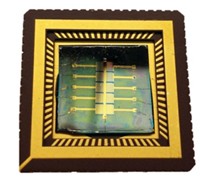Advertisement
Grab your lab coat. Let's get started
Welcome!
Welcome!
Create an account below to get 6 C&EN articles per month, receive newsletters and more - all free.
It seems this is your first time logging in online. Please enter the following information to continue.
As an ACS member you automatically get access to this site. All we need is few more details to create your reading experience.
Not you? Sign in with a different account.
Not you? Sign in with a different account.
ERROR 1
ERROR 1
ERROR 2
ERROR 2
ERROR 2
ERROR 2
ERROR 2
Password and Confirm password must match.
If you have an ACS member number, please enter it here so we can link this account to your membership. (optional)
ERROR 2
ACS values your privacy. By submitting your information, you are gaining access to C&EN and subscribing to our weekly newsletter. We use the information you provide to make your reading experience better, and we will never sell your data to third party members.
Environment
A Slow Burn for Nanotube Detection
Nanotechnology: New combination technique shows promise for spotting single-walled carbon nanotubes in the environment
by Jeffrey M. Perkel
February 2, 2012
As more manufacturers use carbon nanotubes in electronics and other products, experts expect an increase in the likelihood that the materials will reach the environment. But there haven’t been reliable ways to detect and quantify carbon nanotubes in the field. Researchers now report a method that can spot the materials in environmental samples in tiny amounts (Environ. Sci. Technol., DOI: 10.1021/es203198x).
The main difficulty with detecting carbon nanotubes in the environment is that they share many properties with a naturally abundant material, black carbon. In the lab, researchers can use electron microscopy and light scattering to differentiate the two materials, but those methods are too time-consuming, not quantitative, and not sensitive enough to detect the low levels of the nanotubes in the environment.
So Desiree Plata, an environmental chemist at Duke University, and her colleagues turned to a technique that manufacturers use to check the purity of carbon nanotubes. In the method, called thermogravimetric analysis, scientists heat a sample at increasing temperatures in the presence of either oxygen or hydrogen, and watch for mass losses that occur as different chemical components burn away. Each material produces a characteristic pattern of mass losses at specific temperatures. Since they knew that thermogravimetric analysis could spot the signature of relatively pure carbon nanotubes, Plata and her team wondered if the method was sensitive enough to detect them in unpurified samples.
When they tested the method on environmental samples, they found that the other materials present muddied the analyses. So the researchers coupled thermogravimetric analysis with mass spectrometry to characterize the gases produced during heating in hopes that the mass loss and gas data together would allow them to home in on the nanotube signal.
Plata and her team tested the combination method on 10 commercial carbon nanotube products, on sediment samples alone, and on sediment samples spiked with nanotubes. They found that different types of carbon nanotubes produced unique mass-loss profiles, presumably because of the metals used in their syntheses. The technique also could distinguish between natural black carbon and synthetic nanotubes. In tests with the spiked sediment samples, the scientists could detect as little as 30 µg of carbon nanotubes per g of sediment.
Thomas Bucheli, of Agroscope, the Swiss government’s agricultural, food, and environmental research organization, calls the new method promising and says that the method’s detection limit is the lowest reported to date. But Plata points out that the method has at least two drawbacks: The first is that researchers will have to test environmental samples for every different nanotube type. The second is that the detection limit is still at least one to two orders of magnitude above anticipated environmental concentrations of carbon nanotubes, making the method insufficient for routine field work. The limit is adequate, she says, for detecting events such as accidental factory releases and occupational exposures. She hopes that improvements, including using higher resolution mass spectrometers, could push detection limits into the nanogram range.





Join the conversation
Contact the reporter
Submit a Letter to the Editor for publication
Engage with us on Twitter